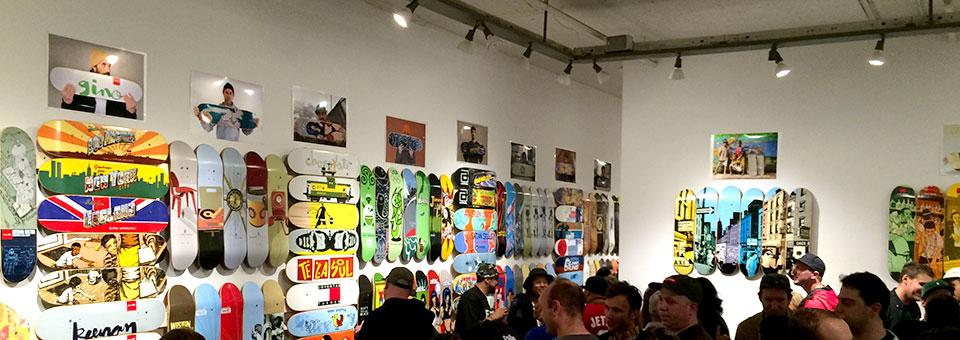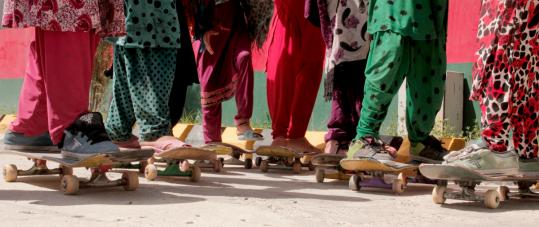Fundraising
Fundraising for your Skate Project
So you’ve got a great idea for a project that will use skateboarding for social change, but you need support to get it off the ground. This toolkit will give an overview on fundraising for skate projects, whether you’re just starting out or are looking to get your organization to the the next level.
Types of funding streams
Before getting into the “how” of fundraising, we need to know what the options are. Some of the most common types of funding for non-profit, grassroots skate projects are:
-
Crowdfunding & online donations: This is one of the quickest ways to get support, using one of several low-cost online platforms (like these) to collect small donations from friends, family and skaters worldwide
-
Institutional grants: These are often larger amounts ($1000 - $1 million) from foundations, development agencies or local councils, given in exchange for a significant amount of reporting and other paperwork. Highly competitive and time-intensive.
-
Corporate donations: Many businesses give a certain amount of profits to charities each year. Usually there is a geographic or thematic link to the charities they support.
-
Sponsorships & in-kind donations: Sometimes it’s easier to get the equipment or services you need donated than to get money to pay for these things. Examples include skateboarding equipment, construction materials, used electronics, or drinking water.
Deciding which type of funding streams make the most sense for your project will depend on many different factors, such as where your project is based, who your project serves, and what connections you have. Almost every project, however, should aim to get support from multiple funding sources, since this will make your project more sustainable and resilient if you lose one of your main donors.
Getting started – use your networks!
No matter which type of funding you’re seeking, it’s essential to build and use your networks. For people to support your work, they need to trust you. Here are some networking tips:
- Set aside some time to map out all of your contacts and potential leads who could either fund you or connect you to a funder
- Make a list of potential supporters in the local community and reach out to them regularly
- Local businesses can be great for providing art supplies, water or snacks
- Local officials are essential for supporting the running your activities, but can help connect you to other important people
- Invite these people to your events to show the impact of your project
- Connect with the skate community, locally and worldwide
- Hold local events, and publish regular updates on social media
- Tap into non-skateboarding communities
- Most skaters don’t have much money, so connect to arts or wider sports communities

DeckAid fundraiser for Skateistan in NYC
Institutional Fundraising
Securing grants from foundations, councils and governments requires persistence, strong administrative skills, and long-term planning. Here are a few tips for finding and getting grants:
- Register your non-profit as a legal entity if you haven’t already. This is a minimum requirement for most grants.
- Subscribe to online funding portals like FundsForNGOs which compiles and shares calls for applications worldwide.
- Find the websites of funders who are supporting similar youth empowerment projects in your community and see if your project might also fit their funding requirements.
- Once you’ve found a call for applications that’s a good fit, try to make contact with the donor before submitting your application (be careful though: some donors encourage this while others do not)
- Invite local foundations, council members or other institutional donors to your events – this is a great way to build the relationship before focusing on money matters
- Once you’ve successfully gotten a grant, keep building that relationship. You can also ask them for help in connecting with other donors who might be interested to support your work.
Messaging & Communications
Your communications is a crucial part of your fundraising, and the key is to always tailor your messaging for the specific audience. This includes your website, social media, photos, videos, and any written documents that you provide to donors. What you communicate and the tone that you use should not always be the same. For example:
- Your social media will likely be more informal and may assume that most followers understand the benefits of skateboarding for youth.
- A grant application, on the other hand, should use formal language and might need to clearly explain the benefits of skateboarding, as well as how your skate project helps address local challenges, such as refugee integration or high-school dropout rates.
Communication for fundraising tips
- Create a short written overview of your key communications messages that all your staff/volunteers can use to be on the same page, including a 30-second “elevator pitch”
- Back up your claims about social change through skateboarding with data and statistics gathered from your project
- Similarly, tell real stories of change from your project to inspire people and give an emotional push for them to donate (Note: first check out our Child Protection toolkit)
- When talking or writing to a specific donor (whether it’s an individual, business or foundation) make a clear link between your activities and their priorities.
- Highlight any external recognition of your project, such as media coverage and awards
Online fundraising campaigns
Whether you have a new project you want to crowdfund for or you’re planning an annual funding drive, online campaigns are a low-cost way to get the message out. To maximize your efforts:
- Plan ahead so you can link the campaign with other big projects that you already have in the works, such as a film you’re planning to release or a new location you want to establish.
- Make sure the messaging in all of your online posts, newsletter and website links to your campaign and pushes people to donate. Try to have only one “call to action” in each social media post or newsletter to avoid overwhelming people.
- Be ready with thank you systems for when you do receive donations so your supporters feel happy they donated and that every cent is appreciated.
Next Steps
-
As you begin to apply for grants, you will notice that there are many documents that they’ll request from your organization. One common document is a Logical Framework (a.k.a. logframe), which is a table demonstrating how your activities will built towards a long-term positive impact. Check out our Goodpush Monitoring, Evaluation and Learning toolkit to learn more about logframes.
-
Check out our Organizational Capacity toolkit to learn about Organizational and Governance Structures, which are also frequently requested documentation by institutional donors.
-
Take a look at the Goodpush Forum on Fundraising, where we regularly post leads on grants and current funding opportunities around the world.
-
Watch our recent webinar on Fundraising for Social Skate Projects (including adapting to COVID).
-
Check out the resources on the Social Change Innovators site - on fundraising and many more topics!
